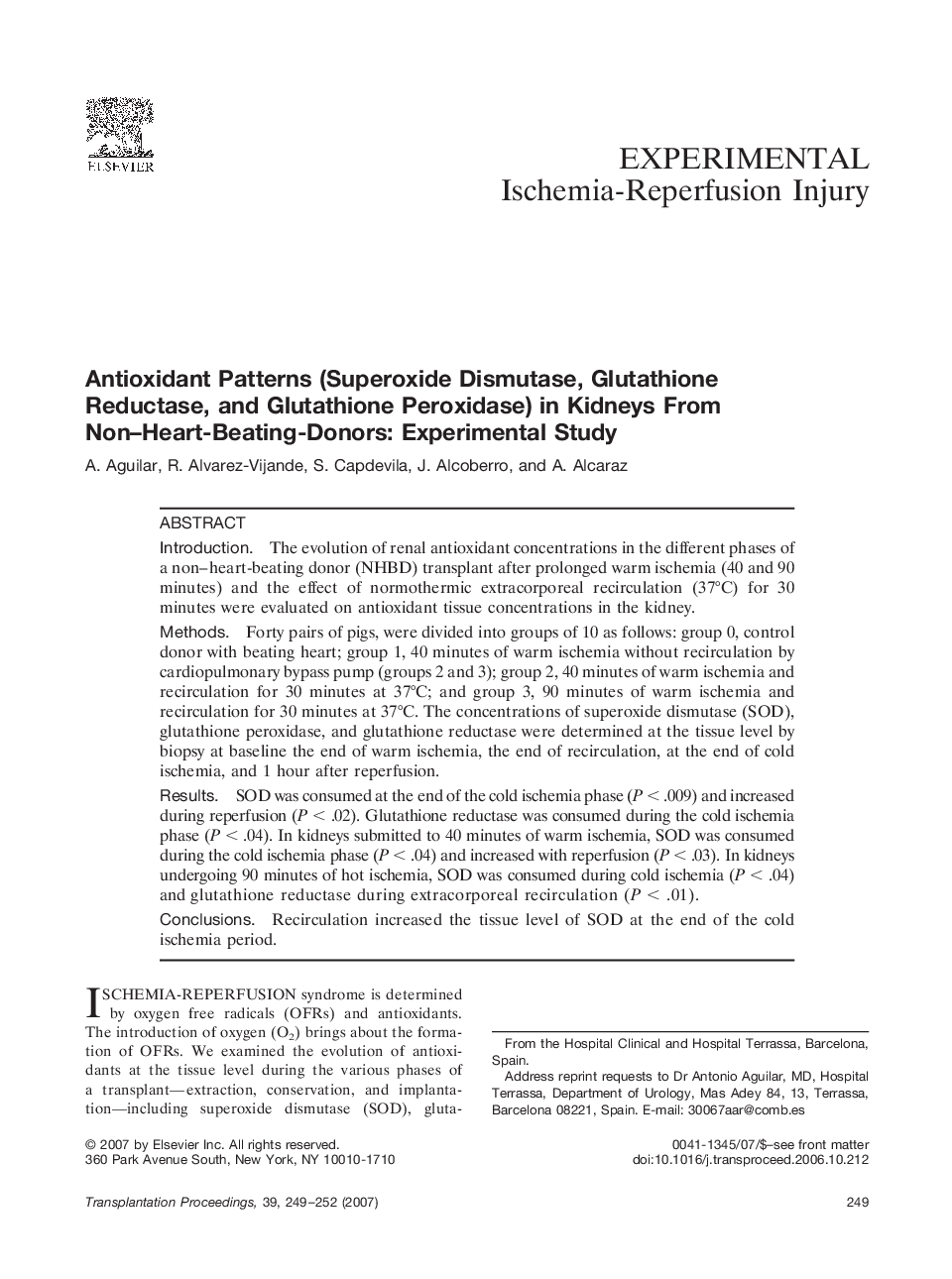| Article ID | Journal | Published Year | Pages | File Type |
|---|---|---|---|---|
| 4262952 | Transplantation Proceedings | 2007 | 4 Pages |
IntroductionThe evolution of renal antioxidant concentrations in the different phases of a non–heart-beating donor (NHBD) transplant after prolonged warm ischemia (40 and 90 minutes) and the effect of normothermic extracorporeal recirculation (37°C) for 30 minutes were evaluated on antioxidant tissue concentrations in the kidney.MethodsForty pairs of pigs, were divided into groups of 10 as follows: group 0, control donor with beating heart; group 1, 40 minutes of warm ischemia without recirculation by cardiopulmonary bypass pump (groups 2 and 3); group 2, 40 minutes of warm ischemia and recirculation for 30 minutes at 37°C; and group 3, 90 minutes of warm ischemia and recirculation for 30 minutes at 37°C. The concentrations of superoxide dismutase (SOD), glutathione peroxidase, and glutathione reductase were determined at the tissue level by biopsy at baseline the end of warm ischemia, the end of recirculation, at the end of cold ischemia, and 1 hour after reperfusion.ResultsSOD was consumed at the end of the cold ischemia phase (P < .009) and increased during reperfusion (P < .02). Glutathione reductase was consumed during the cold ischemia phase (P < .04). In kidneys submitted to 40 minutes of warm ischemia, SOD was consumed during the cold ischemia phase (P < .04) and increased with reperfusion (P < .03). In kidneys undergoing 90 minutes of hot ischemia, SOD was consumed during cold ischemia (P < .04) and glutathione reductase during extracorporeal recirculation (P < .01).ConclusionsRecirculation increased the tissue level of SOD at the end of the cold ischemia period.
